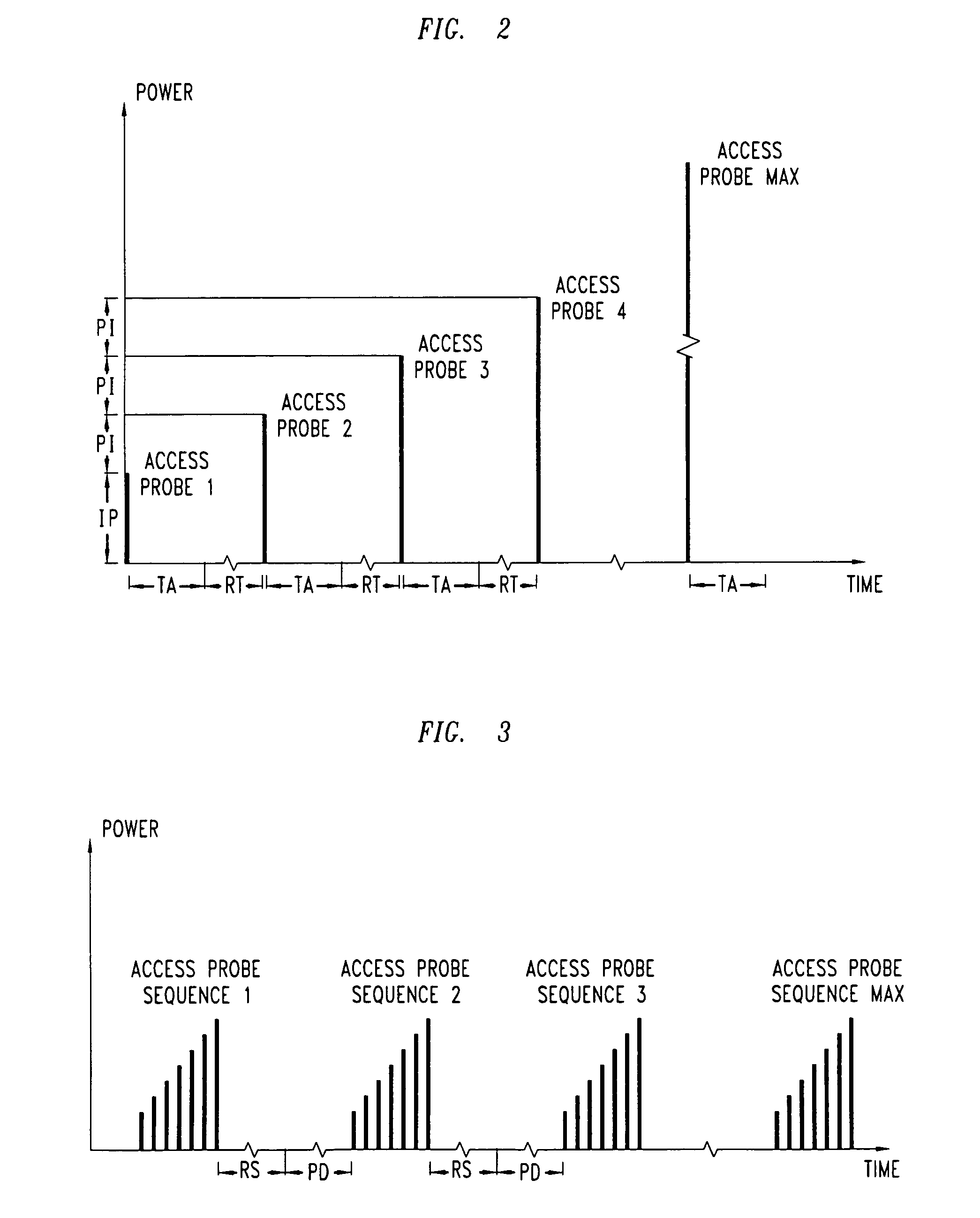Method of minimizing reverse channel interference caused by an abnormally high number of access attempts in a wireless communications system
a reverse channel interference and wireless communication technology, applied in the field of telecommunications, can solve problems such as inability to mature into a connection to the network, lack of transmission resources, and inability to connect viablely
- Summary
- Abstract
- Description
- Claims
- Application Information
AI Technical Summary
Benefits of technology
Problems solved by technology
Method used
Image
Examples
Embodiment Construction
[0015]With reference to FIG. 1, a wireless communications system 100 is shown in which a base station 101 is connected to a Mobile Switching Center (MSC) 102. In certain embodiments, a Base Station Controller (BSC) may be connected between the base station 101 and MSC 102. Other base stations (not shown) will also be connected to MSC 102. MSC 102, in turn, is connected to the wireline POTS telephone network 103. A plurality of mobile terminals 104 can access the wireless network 100 and, in turn, the wireline POTS telephone network 103, through base station 101 as long as they are within the coverage area 110 of that base station. Each time one of the mobile terminals 104 attempts to access the network, it makes an access request on a common reverse access channel an in the form of an access probe. If the wireless network recognizes the access probe, the base station 101 sends a response downlink to the mobile terminal 104 and the mobile terminal stops transmitting any more access p...
PUM
 Login to View More
Login to View More Abstract
Description
Claims
Application Information
 Login to View More
Login to View More - R&D
- Intellectual Property
- Life Sciences
- Materials
- Tech Scout
- Unparalleled Data Quality
- Higher Quality Content
- 60% Fewer Hallucinations
Browse by: Latest US Patents, China's latest patents, Technical Efficacy Thesaurus, Application Domain, Technology Topic, Popular Technical Reports.
© 2025 PatSnap. All rights reserved.Legal|Privacy policy|Modern Slavery Act Transparency Statement|Sitemap|About US| Contact US: help@patsnap.com



